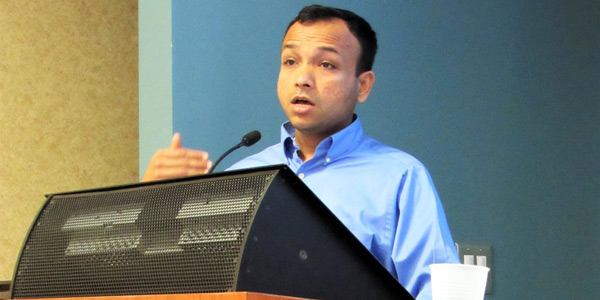By Amanda Durish Cook
Less than two years after rolling out its major queue redesign, MISO is once again poised to file generator interconnection process changes to help manage the record volumes in its queue.
The changes involve milestone payments and site control requirements and are aimed at encouraging stalled projects to withdraw from the queue earlier in the process. (See “Further GIP Alterations,” Little Work Needed to Comply with Order 845, MISO Says.) The queue now contains about 530 projects totaling almost 90 GW.
“MISO has to better manage the number of non-ready projects entering the queue,” Manager of Resource Interconnection Neil Shah said during an Aug. 27 Interconnection Process Task Force conference call.
Site Control
MISO’s changes would maintain the acreage requirement for a developer’s site control but would scale back some of the acreage requirements proposed in July, with 50 acres/MW for wind generation, 5 acres/MW for solar generation, 0.1 acre/MW for electric storage resources and a flat 10 acres for a conventional generation facility. The RTO had originally proposed 1 acre/MW for battery storage and 50 acres for conventional generation, but MISO stakeholders said requiring that much land was excessive.
Shah said most stakeholders prefer an acreage-per-megawatt site control requirement.
Additionally, the RTO now says it will allow developers to submit site control for smaller acreage amounts provided they submit an analysis from an independent consultant supporting the reduced requirement.
MISO also said the $10,000/MW cash deposit that developers can alternately provide if a state’s regulatory restrictions limit site control will now be refundable when a developer either withdraws its project from the queue or submits proof of site control. The RTO still proposes that the developer “submit adequate documentation demonstrating regulatory restrictions” to be eligible for the $500,000 minimum, $2 million maximum cash deposit in lieu of showing site control.
“We’ve incorporated that flexibility based on stakeholder feedback,” Shah said.
MISO will also require interconnection customers to submit documentation for exclusive site control 90 days prior to the start of the queue’s definitive planning phase as opposed to the time of queue application, as originally proposed.
Shah said the new 90-day window is needed to screen site control documentation.
Vikram Godbole, MISO resource utilization director, pointed out that most generation interconnection customers do not furnish all required information with queue applications.
“About 90% of the applications MISO receives are incomplete for various reasons. That’s just not acceptable. If MISO is going to make progress, we have to work together,” Godbole said.
He said MISO is currently working to automate the online submission process for queue applications.
“That’s not done, but we’re getting ready for that,” Godbole said, adding that stakeholders should begin sending complete applications and site control documentation in preparation for an automated process that will likely not accept unfinished applications.
Milestones
MISO is also walking back its proposal to incorporate upgrade costs found in affected systems studies into the last of three milestone payments. The milestone fee will now be a flat 20% of necessary network upgrade costs, instead of a combined 10% of upgrades identified in the studies and 10% of network upgrades.
Finally, the RTO said it will refund the entire first milestone payment of $4,000/MW if a customer withdraws its project before it reaches the beginning of the definitive planning phase.
“I think what you’re seeing here is a good compromise achieved with stakeholders,” Godbole said.
MISO staff said they will present final Tariff revisions at the Sept. 26 Planning Advisory Committee meeting. The RTO hopes to file queue Tariff revisions sometime in October or November.
Back-to-Back Queue Revisions
Some stakeholders asked why MISO is pursuing queue changes so early into implementing its three-phase queue design, accepted by FERC in early 2017. (See FERC Accepts MISO’s 2nd Try on Queue Reform.)
Shah responded that MISO must heed stakeholder feedback and FERC complaints over queue delays. In an April order in response to a complaint about delays, FERC warned MISO about its delays and urged it to consider improvements to its queue process. (See “No Ringing Endorsement,” FERC Sides with MISO in Queue Design Dispute.)
“We have heard loud and clear from complaints filed at FERC that MISO’s revised process after queue reform is still not working for them,” Shah said. “Interconnection customers want MISO to reduce delays. … Not doing anything is probably not an option right now.”
Shah added that he could not guarantee that the new revisions will enable all wind developers to meet production tax credit deadlines.




